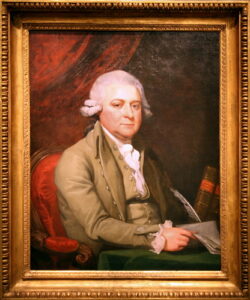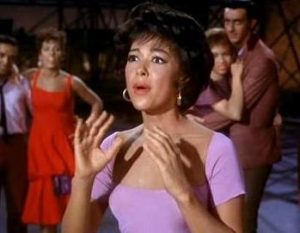Since ancient times, the Eye of Horus, which is also referred to as the “all seeing eye,” is one of the most recognized symbols of ancient Egypt. The Egyptian symbol for the goddess Wedjat was used for protection, for healing, as well as for mathematical and medicinal calculations. The word Wedjat means sound, and it is the name of a cobra goddess often depicted as a rearing cobra. The all seeing eye continued in Egyptian civilization and was in use for thousands of years and still continues to be used today.1
According to Egyptian mythology, the god Horus lost his left eye in one of his struggles with the god Set, the brother of Osiris, for the right to rule Egypt, and to avenge the death of his father Osiris. The eye was later restored by the god Hathor, and his restoration came to symbolize the process of making whole and healing. Some other versions of the story indicate that the god Thoth restored the eye and not Hathor. The story states that the restored eye became a symbol of light, and represented protection, strength, and perfection. Although another version of the myth states that it was in fact the right eye and not his left, and that it represented the sun that was torn out again by Set during one of their battles.1

Thoth then restored all of the eye except a small piece that became the origin of the Horus-eye fractions. The right side of the eye equaled 1/2, the pupil 1/4, the eyebrow 1/8, the left side of the eye 1/16, the curved tail 1/32, and the teardrop 1/64. Once these fractions were added, they total 63/64, known in mathematical circles as the reciprocal 2N series and a complementary fraction. The Horus eye fractions were used for measuring grains and medicines.3
The right eye is said to be symbolic of the sun, the day, and its power. The left eye represents the waxing and waning properties of the moon–the Horus or light of the night. The two-winged eyes represent the two divisions of heaven: north and south, and sun and moon. The image uraeus was a symbol of kingship and power and said to be worn on top of the forehead. The Wedjat was also depicted as a leonine form known as the Eye of Ra. The Eye of Horus survived beyond ancient Egypt in various cultural, mystic, esoteric, and, more recently, neo-Egyptian traditions. The masonic symbol of the eye of Providence, which appears on U.S. currency, is said to derive from the Eye of Horus, as does the Rx symbol used by the pharmaceutical industry. Although some people believe the evil eye is part of the Wedjat tradition, it’s not, even though some sources may link the two. Therefore, the Wedjat is still popular as both a symbol and an amulet, either for protection or for its association with ancient Egyptian culture.4
- Encyclopedia of African Region, 2009, s.v. “Eye of Horus, ” by Denise Martin. ↵
- Encyclopedia of African Region, 2009, s.v. “Eye of Horus, ” by Denise Martin. ↵
- Edward Hincks, “On the Age of the Eighteenth Dynasty of Manetho,” The Transaction of the Royal Irish Academy Vol.21 (1864): 3-10. ↵
- Edward Hincks, “On the Age of the Eighteenth Dynasty of Manetho,” The Transaction of the Royal Irish Academy Vol.21 (1864): 3-10. ↵



58 comments
James Clark
The Eye of Horus is one of the most recognizable symbols that managed to stand the test of time. It’s extremely interesting to see how the symbol of the Eye of Horus came to be and why the eye is now seen as a symbol of protection and strength. Also, even when reading about Egyptian mythology I never came across the fact that the Eye of Horus was used for measuring different things in Egypt. It’s extremely interesting to find out the true meaning behind the Eye of Horus and its many other important uses in Egyptian culture.
Azariel Del Carmen
It was interesting to hear a bit more about Egyptian history, especially about the eye of Horus which has been used a few times throughout our century in content that we watched. I didn’t know the eye was originally lost and got repaired so I will say that was something new to learn and the dimensions seemed to be so intact to be equal except by a margin was a close coincidence.
Amanda Gutierrez
I never knew much about the Eye of Horus before reading your article. It was interesting to read about the story of Horus and Set and how Horus’s eye got torn out and then became a symbol of protection. I also found the Horus eye fractions to be quite interesting. This was a very nice article, and I learned a lot from it; I wish I had more to read about it! Nice job!
Meadow Arriaga
I never knew the all seeing eye was the eye of Horus. I thought it was only symbolic. I was also unaware that the eye had math behind it, which proves there is a lot of meaning that comes with that. I find it interesting this article talks about the confusion between the all seeing eye and the evil eye, because I didn’t think it was a common mistake.
Sebastian Azcui
I had no idea about the Eye of Horus. I had no idea that the Eye of Horus was such an important symbol in ancient religion and it had a great meaning. Egyptian mythiology is something new for me as I never read about it. It is interesting how the eye works, by measuring grains and medicine. This mystical symbol went through many generations and still managed to survive.
Amelia Hew
I’ve read about the story between Horus and Set, and that Horus’s eye got torn out and became a symbol of protection, but what I didn’t know is that there was a thing called the Horus eye fractions that were used for measuring grains and medicines. The fact that this symbol was able to be passed down to many generations and survived for so long in various cultures makes it even more interesting. Egyptian mythology is always so fascinating to read about and its also one of my favorites.
Todd Brauckmiller
I never really explored Egyptian mythology before and so far I’m impressed with what Iv’e been reading. Very interesting about the eye and how it was lost in the struggle for kingship. Horus sounds like a very interesting god and am fascinated by the story of his struggles against his uncle Set. A nice and simple article to read and will continue to read more Egyptian myths.
Antonio Coffee
The Eye of Horus is one of the most famous and well known religious symbols from the ancient world. It was interesting to hear more about where the origins of this symbol are. I was really into mythology as a kid and this was one symbol that I saw often and I was curious about what it symbolized and where it came from. I did not realize that the parts of the eye represented different fractions and that they were used for measuring things in Egypt. I am glad that I was able to learn about the more practical parts of this ancient symbol.
Matthew Swaykus
While may be shorter than most that I’ve seen on this website, it goes into a lot of detail about the origins and uses of the “all seeing” eye. From a mythological standpoint, Horus may very well be one of the most prominent figures in Egyptian mythology. Horus avenges his father, Osiris, by beating Set when the world seemed at its darkest. Similarly, this article points out that the moonlight, or “the Horus” that comes out of a crescent moon fights against the darkness and shines hope. All the same, I am glad the author was able to find all the variations of this symbol and how even the US dollar keeps this symbol alive.
Yazmin Garza
I wish this article was a little bit longer; it has really good information but I feel like I need more to fully understand the meaning and significance of the Eye of Horus. I also wish that it went into more detail about how exactly the Eye of Horus was used to make measurements, and also how each of the fractions was derived for each part of the eye. Other than that it was a very informative article. I see how the Eye of Horus and its symbolization of healing could eventually be transformed into the Rx symbol we use today.